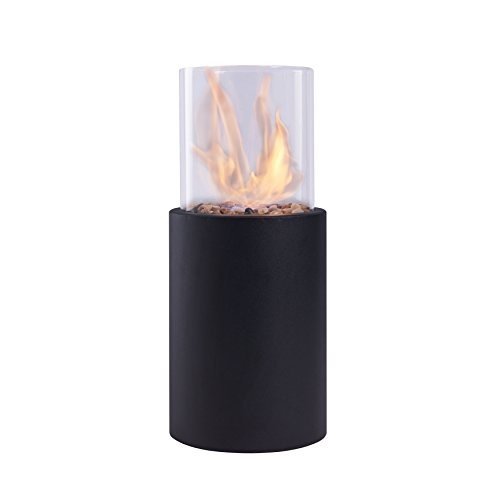What Is The Reason? Fireplaces And Stoves Is Fast Becoming The Trendiest Thing Of 2024
The Comprehensive Guide to Fireplaces and Stoves
Fireplaces and stoves have been integral to human civilization for centuries, functioning as a source of warmth, light, and convenience. Fireplaces Online are available in various types and have progressed for many years, catering to varied choices and technological improvements. This post supplies a helpful overview of fireplaces and stoves, highlighting their types, advantages, upkeep suggestions, and setup considerations.
Types of Fireplaces
The world of fireplaces is abundant and varied. Here are the most typical types:
Wood-Burning Fireplaces:
- Traditional and captivating.
- Needs seasoned wood and regular maintenance.
- Produces an enjoyable fragrance and crackling sound.
Gas Fireplaces:
- Offer benefit and ease of usage.
- Offered in vented and vent-free choices.
- More efficient and cleaner than wood-burning options.
Electric Fireplaces:
- Provide ambiance without the requirement for a chimney.
- Easy to use with push-button control alternatives.
- Can be used as an extra heat source.
Pellet Stoves:
- Use compressed wood pellets as fuel.
- Extremely efficient and environmentally friendly.
- Typically equipped with thermostats for temperature level control.
Ethanol Fireplaces:
- Utilize bioethanol fuel, making them portable.
- Do not need venting, which permits versatile positioning.
- Produce a practical flame with minimal smoke.
Outdoor Fireplaces:
- Designed for outdoor settings; can be wood or gas-burning.
- Great for amusing and enhancing backyard aesthetic appeals.
- Often constructed from stone, brick, or metal.
Advantages of Fireplaces and Stoves
Including a fireplace or stove into a home uses various benefits:
- Aesthetic Appeal: Fireplaces serve as striking focal points in any room, including heat and character to home decor.
- Increased Property Value: Homes with practical fireplaces tend to have higher resale values.
- Energy Efficiency: Modern fireplaces and stoves are designed to be more energy-efficient, which can lead to decreased heating costs.
- Backup Heating Source: In case of power failures, wood-burning and gas fireplaces can work as necessary heating sources.
- Versatile Heating Solutions: Different types of fireplaces cater to numerous heating needs and lifestyles, from cozy ambiance to efficient heating.
Type of Fireplace/Stove
Fuel Source
Efficiency Rating
Maintenance Level
Wood-Burning
Wood
Moderate
High
Gas
Natural gas/LP
High
Low
Electric
Electrical energy
High
Extremely Low
Pellet
Wood pellets
High
Moderate
Ethanol
Bioethanol
Moderate
Low
Outdoor
Wood or gas
Moderate
Varies
Maintenance Tips
Appropriate upkeep extends the life of fireplaces and stoves, making sure security and efficiency. Here are some important tips:
Regular Cleaning:
- Wood-burning fireplaces need to be cleaned after a full season of use to eliminate soot and creosote.
- Gas fireplaces require routine assessment of the burner and vents.
Regular Inspections:
- Have chimney sweeps perform yearly examinations to recognize obstructions or structural damage.
- Inspect the seals and gaskets on gas systems to prevent leakages.
Fire Safety:
- Install smoke and carbon monoxide detectors in homes with fireplaces or stoves.
- Keep a fire extinguisher near the fireplace or range for emergency situations.
Usage Quality Fuel:
- For wood-burning units, constantly use seasoned wood; avoid dealt with or painted wood.
- When utilizing pellets, guarantee they are saved correctly to prevent moisture absorption.
Manage Airflow:
- Keep vents and ducts clear to promote efficient ventilation and airflow.
- Consider utilizing glass doors or screens to reduce particles and ash in the home.
Setup Considerations
Installing a fireplace or range needs cautious consideration of several factors:
Location:
- Choose a place that permits proper clearance and ventilation.
- Consider the layout of your home and the benefit of natural heat circulation.
Structure Codes and Permits:
- Check regional guidelines regarding installations and required licenses.
- Engage an expert to make sure compliance with security standards.
Fuel Type:
- Evaluate your fuel alternatives based on accessibility, cost, and ecological effect.
- If opting for gas, guarantee existing gas lines can accommodate the new device.
Ventilation:
- Proper venting is important for safety and efficiency, particularly for gas and wood-burning units.
- Speak with an expert to figure out the very best venting solution.
Visual Consideration:
- Select a style that complements your home's interior.
- Think about mantels, surround materials, and colors that match your decoration.
FAQs
What is the very best type of fireplace for heating?
Gas fireplaces are normally more efficient for heating, while wood-burning fireplaces supply more ambient heat.
How typically should I clean my fireplace?
Wood-burning fireplaces need to be cleaned at least as soon as a year, while gas fireplaces require less regular attention depending upon use.
Can I install a fireplace myself?
While some house owners might try DIY setup, it is recommended to hire a professional to guarantee safety and compliance with building codes.
Are electric fireplaces efficient?
Yes, electric fireplaces are extremely efficient and can work as efficient additional heating sources, especially in smaller sized areas.
What is the life expectancy of a fireplace?
The lifespan of a fireplace differs depending on the material, type, and maintenance; nevertheless, a properly maintained wood-burning fireplace can last over 30 years.
Fireplaces and stoves remain timeless features in homes, using warmth and ambiance. Understanding more info , advantages, and maintenance requirements can help house owners make informed decisions about setup and care. With cautious preparation and regular maintenance, these devices can boost both the comfort and value of a home for years to come.
